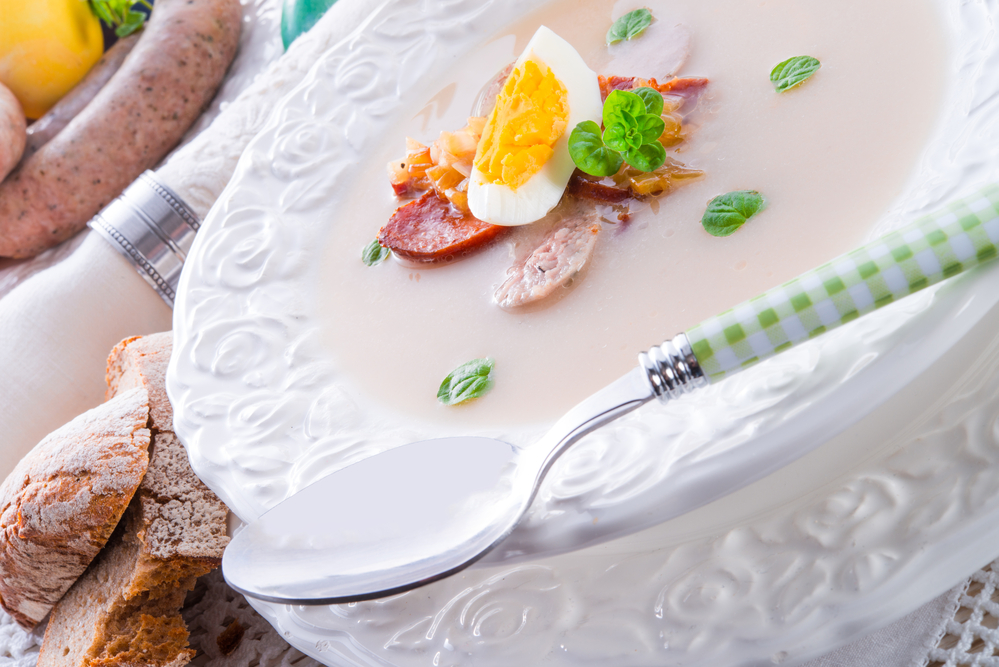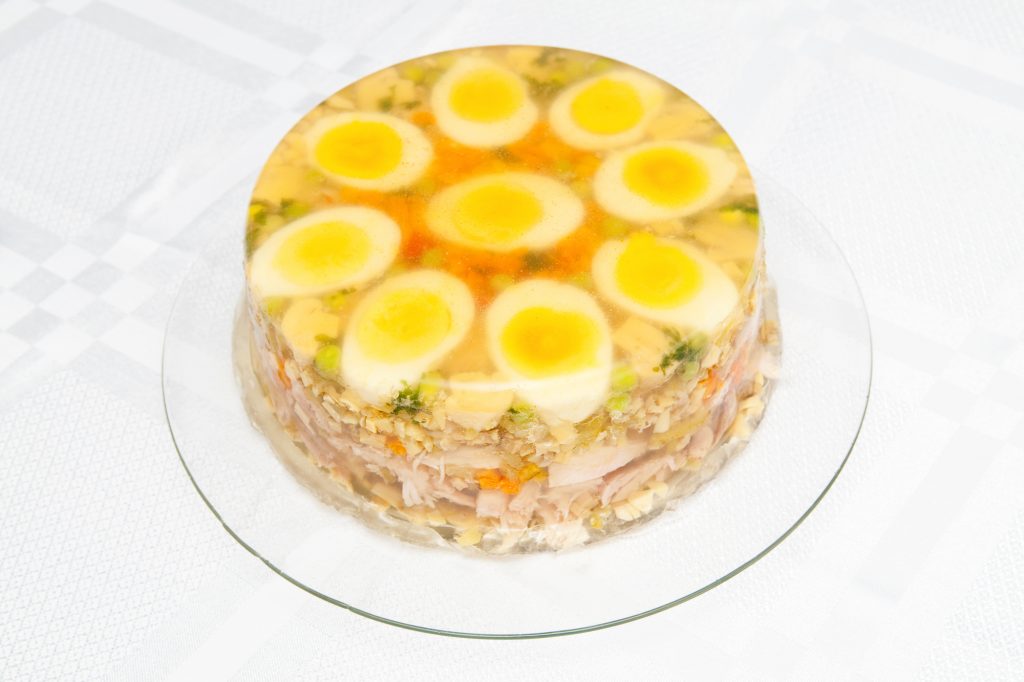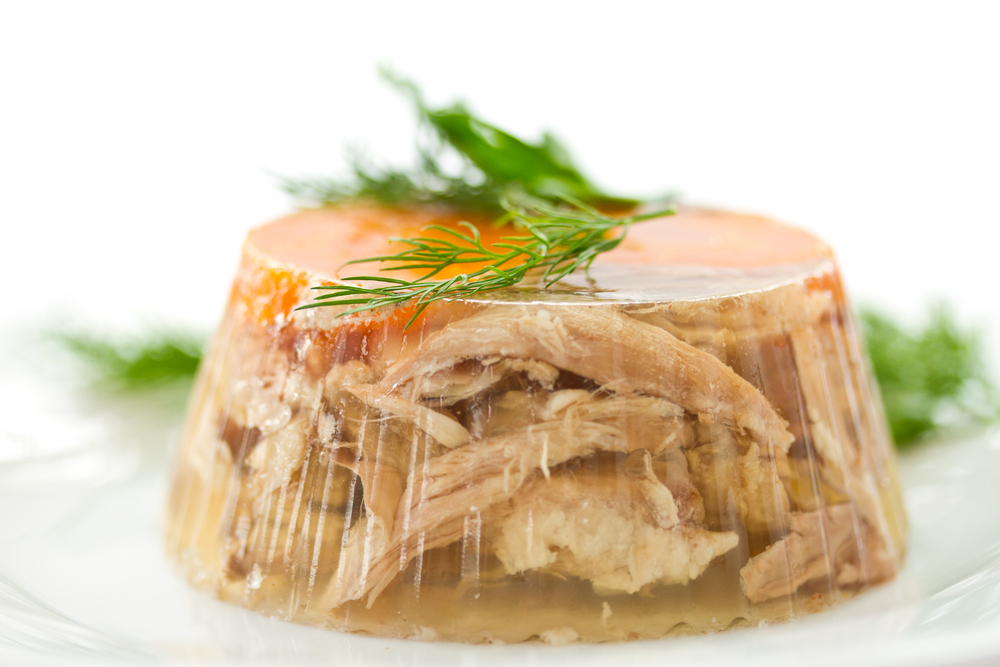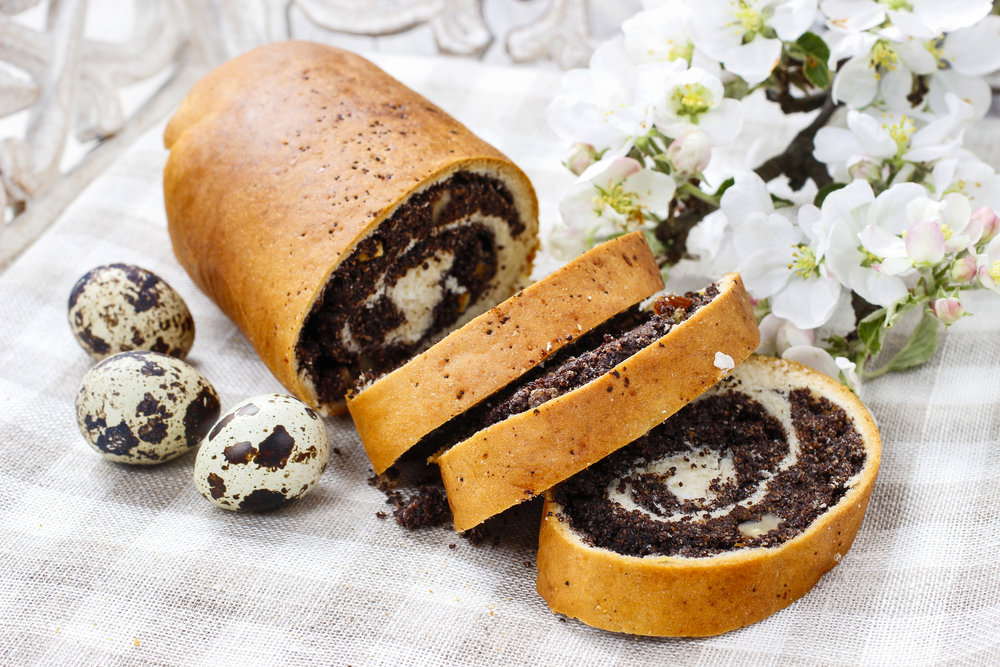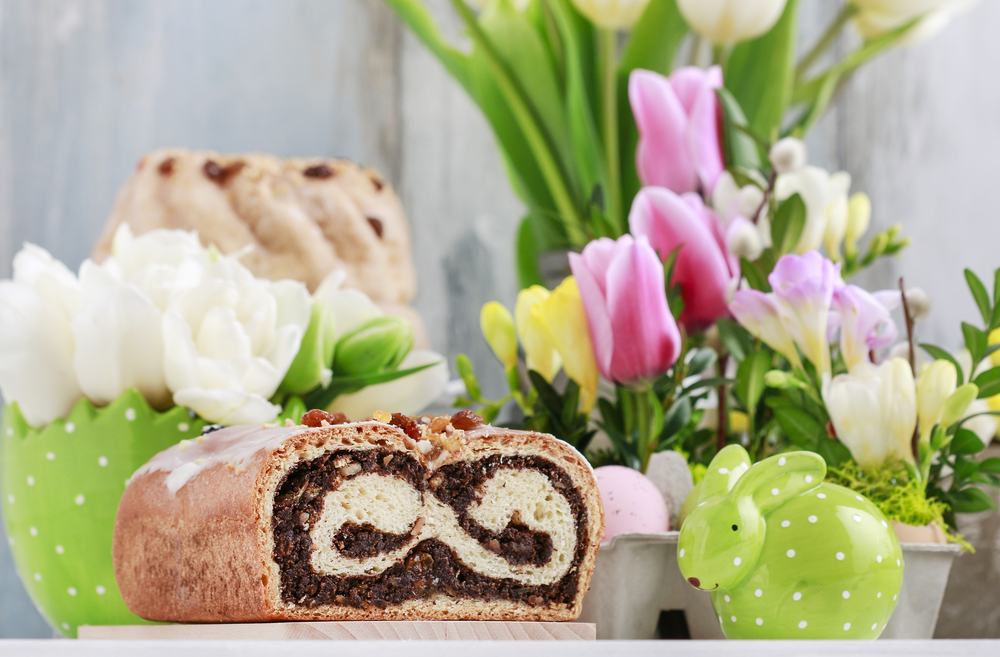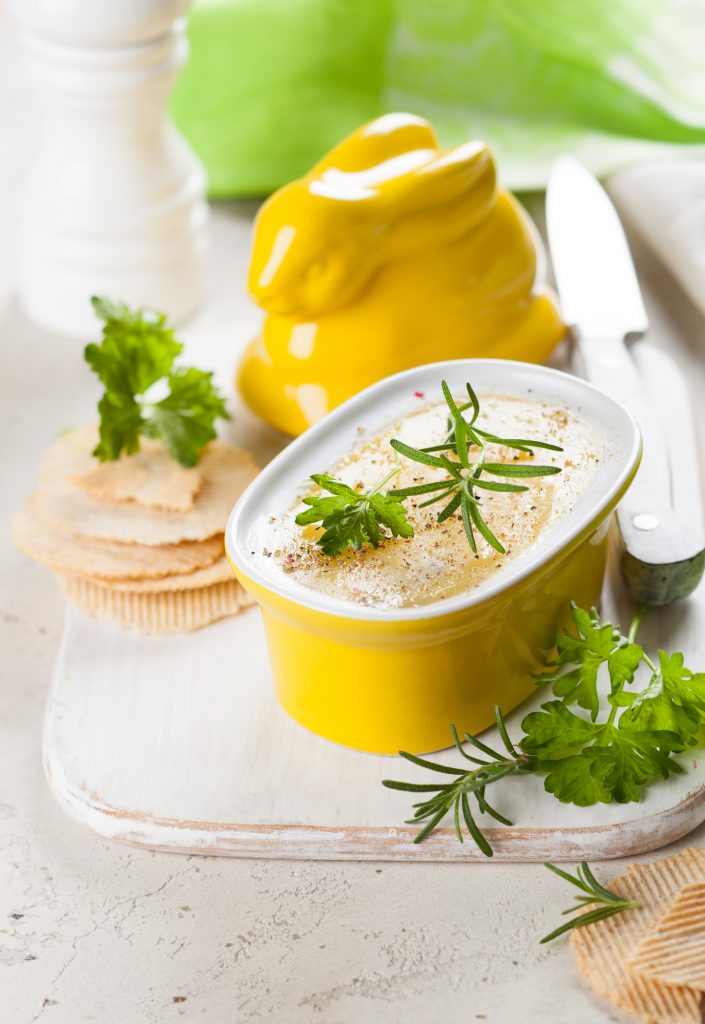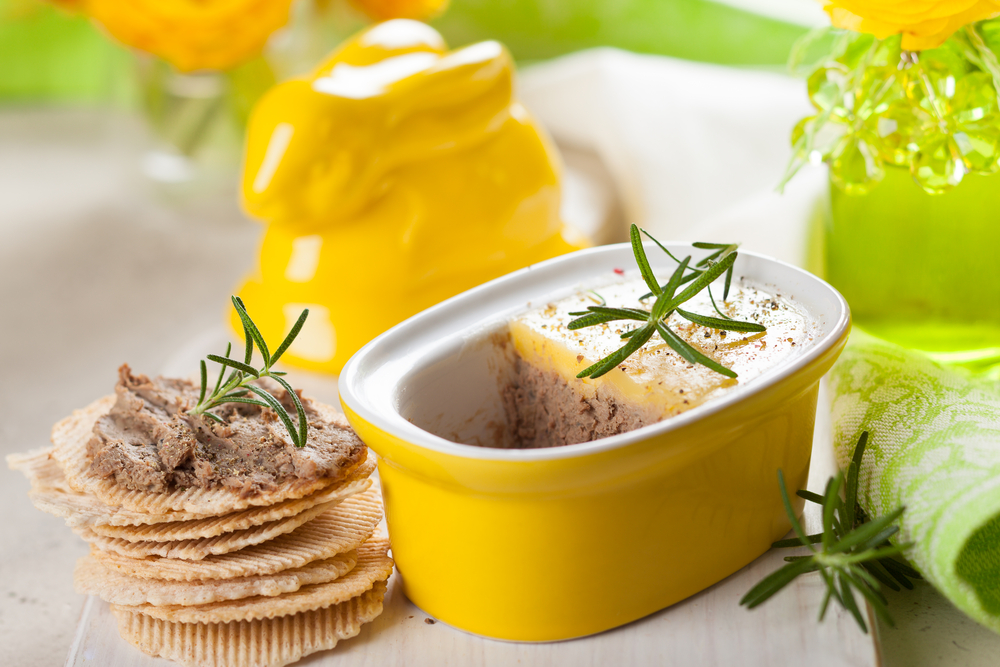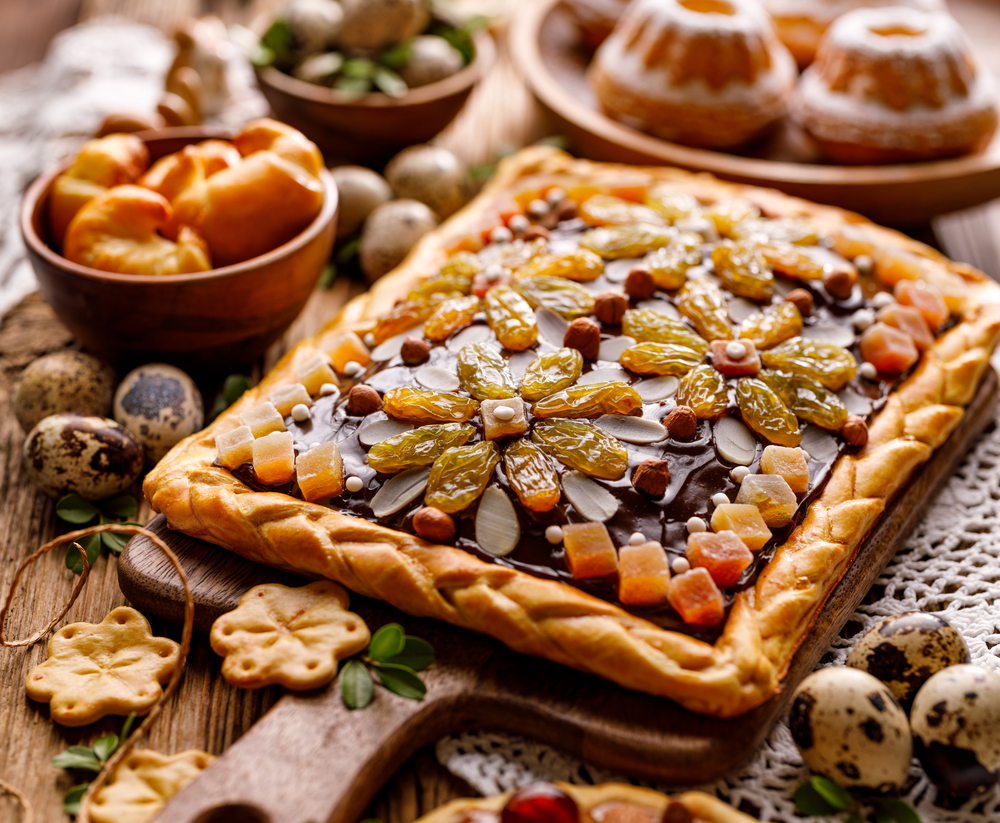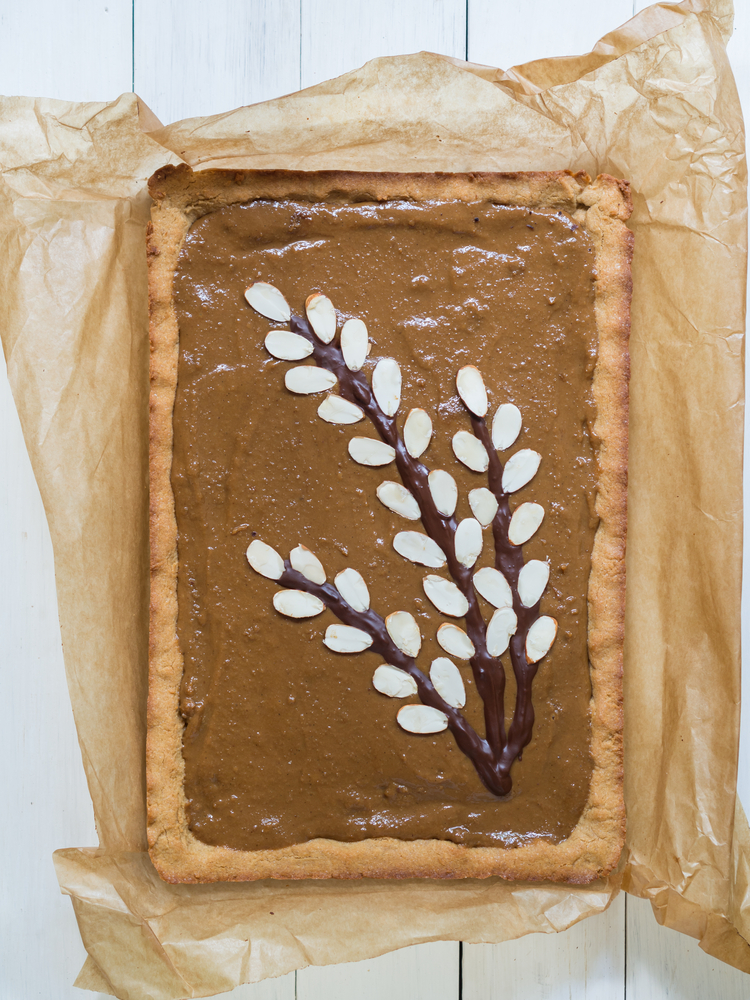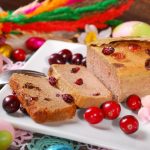Easter is a celebration for all Christians around the world no matter the country of origin. Preparing massive feasts and inviting guests for Easter has become a tradition we are all familiar with. Making Easter dishes can be a little difficult for Polish people due to the lack of fresh spices and ingredients.
Despite the difficulties, you can easily improvise and recreate Polish Easter dishes within the comforts of your own home. Using carefully picked out ingredients along with the right recipes, you can successfully fill up your Easter table at ease.
Today, we will be looking into a list of the top 14 Polish Easter food recipes. These easy-to-cook dishes are bound to enchant your guests and reel them in towards the dinner table.
14 Polish Easter Dishes
So without further ado let’s take a look at our lineup of mouth-watering polish Easter dishes.
1. Biała kiełbasa
No Polish Easter dinner is complete without their specially made sausage. Typically known as Biala Kielbasa, this dish is the most popular Polish recipe out there. Making the Biala Kielbasa is very easy if you know how to pick your sausage and season it well. But before that, you would need to find the right sausages.
The pork sausage used in this recipe is made from a mix of meat such as veal and beef. Once you begin to cook the white sausage, make sure you add the right spices to enhance the flavor. Salt and pepper are the most common but you can also add garlic powder and marjoram to give a more original taste.
When baking, be sure to add other vegetables around the white sausage to create a good balance of natural plant-based flavors. Your selection of vegetables is crucial as it needs to complement the taste of the sausages.
2. Deviled Stuffed Eggs
Any traditional Polish native can vouch for their love of eggs. In fact, eggs are a common sight in most Polish Easter traditions. The boiled egg symbolises life and the resurrection of Jesus Christ. This is why you will frequently find boiled egg on any Polish Easter table you go to. How to prepare some of the best Polish easter eggs?
The hard boiled eggs provide nutrition and act as a compliment for most main dishes. With time people have created new ways to make deviled stuffed eggs by adding other flavorful ingredients such as horseradish sauce and pickles. This is a versatile dish that works wonders as an Easter breakfast.
All you need to do is boil a few eggs from your Easter baskets for 7-8 minutes and take their shells off. Afterward, cut them all in half and place the yolks in a large bowl. This is where you can start adding different ingredients to manipulate the taste of your eggs. Add herbs, horseradish, or even pickles along with mayonnaise and begin to mix till you reach the desired consistency.
Carefully fill in your egg whites with a spoon and voila! Your deviled egg whites are ready!
Keep in mind that Polish easter eggs come in many forms – and perhaps the most important one are hard boiled easter eggs. Traditionally, they are taken to the church in said easter basket to be blessed by the priest. Blessed eggs certainly taste better than ordinary ones!
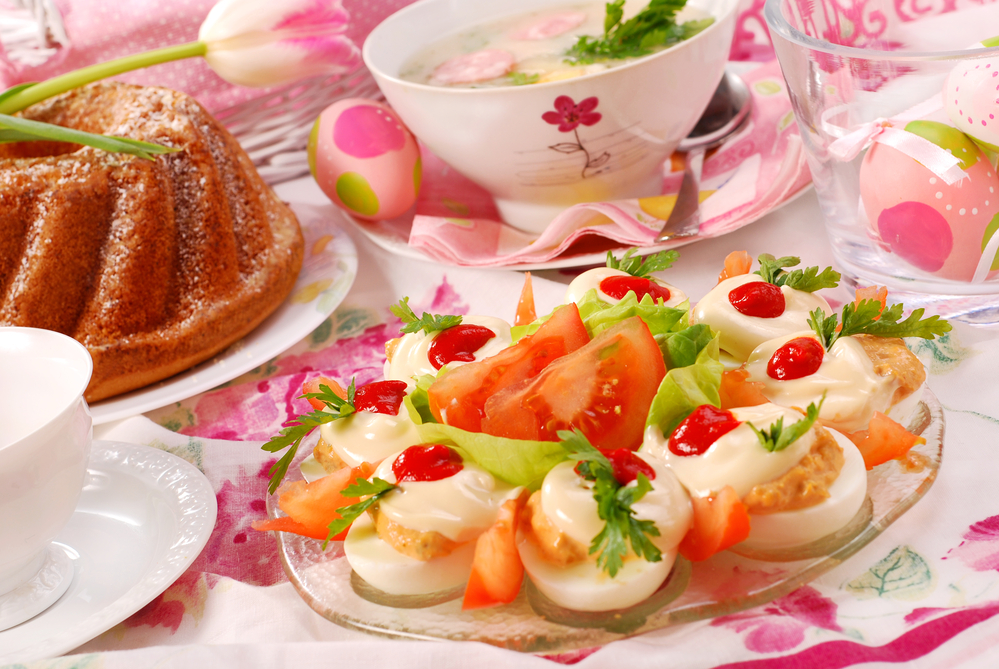
Deviled stuffed eggs 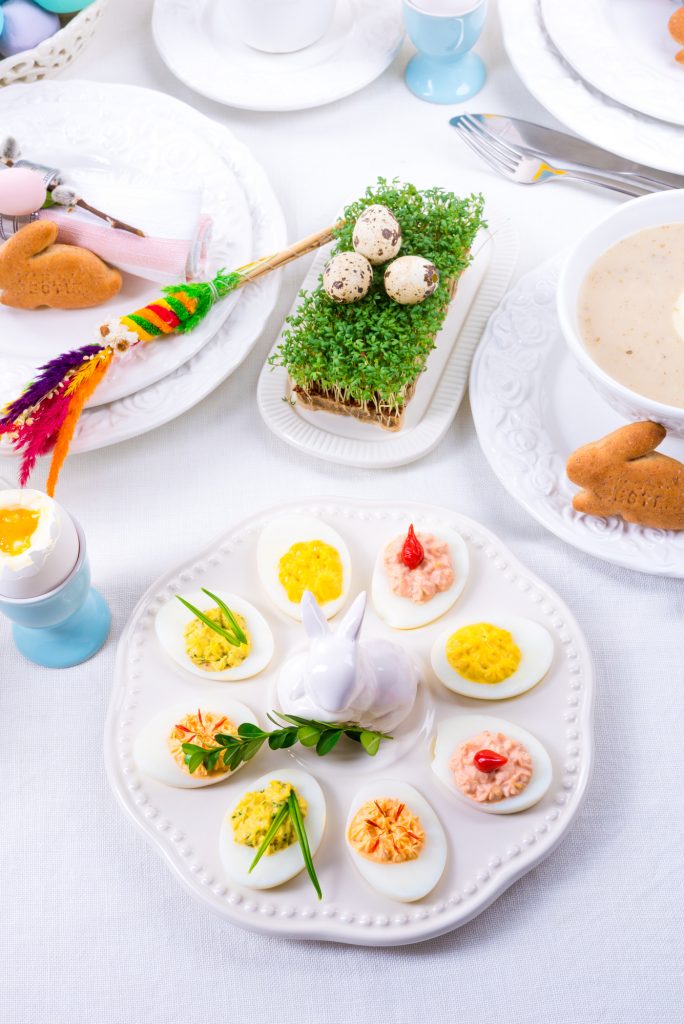
Deviled stuffed eggs on Easter breakfast table 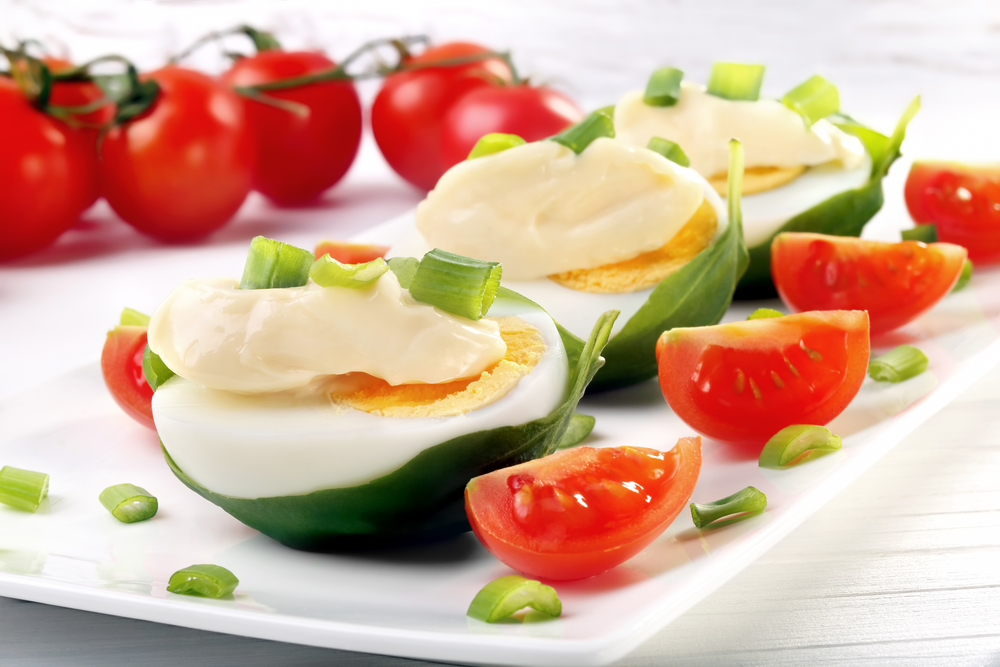
Easter eggs with mayonnaise, spring onions and cherry tomatoes
3. Żurek
Our next recipe on the list is a famous companion of the Biala Kielbasa. Zurek is a thick sour soup that is often served with some hard boiled egg. If you’re looking for a trio of Polish Easter food then our top three shall do the trick. This isn’t just a Polish Easter recipe, in fact, it is cooked all year round in Poland so why skip out?
The soup is sour in taste as its base is made with fermented soured rye flour. This is what makes the soup so flavorful. The taste packs a sour punch with each spoon but leaves a nice aftertaste that has you looking for more. If you’re looking to try out the Biała kiełbasa this Easter season, then you must attempt to cook Żurek too!
4. Galaretka z Kurczaka
Galaretka z Kurczaka or simply put, chicken inside gelatin is a unique dish that we only see in Poland. As the name suggests, this Easter recipe contains an unusual mixture of chicken soup and gelatin. This is only made during the Easter celebration or special events, so including this will definitely turn heads at the dinner table.
Since the gelatin is transparent, Polish natives incorporate different vegetables into the recipe to make the dish colorful and appetizing. If you look at the right recipes, they will teach you how to add half-cut eggs to the gelatin. Upon solidifying, the eggs add good amounts of flavor and protein to the dish.
5. Sałatka Jarzynowa
No dinner table is complete without a proper salad and when it’s Easter, that salad better be the Sałatka Jarzynowa or vegetable salad. For the Polish, this is one of the most popular salads to exist as they make it all year round. It is a special vegetable salad that contains a good mix of natural proteins, carbohydrates, and fats.
In most households, they will first cook the vegetables to make them nice and soft. Then, comes a layer of fine Polish mayonnaise which acts as a dressing to mix all the veggies together. The most common vegetable choices for this salad include carrots, peas, onions, celery, cucumber, and parsley. Some people also add a sliced egg just to enhance the flavor.

6. Babka
The Babka is a well-known sweet bundt cake that is the perfect dessert after a heavy meal. What makes this cake stand out amongst others is its special rum syrup topped with vanilla icing. In terms of looks, this is no ordinary cake either, the Babka stands tall and fluffy as it is cooked on a bundt pan.
7. Baranek Wielkanocny
Much like the Babka, the Baranek Wielkanocny is also a common dessert we see on Polish Easter dinners. This is similar to the Babka, in the sense that it is also a bundt cake. However, the difference lies in the looks as this cake has the shape of a resting lamb covered in sugar icing.
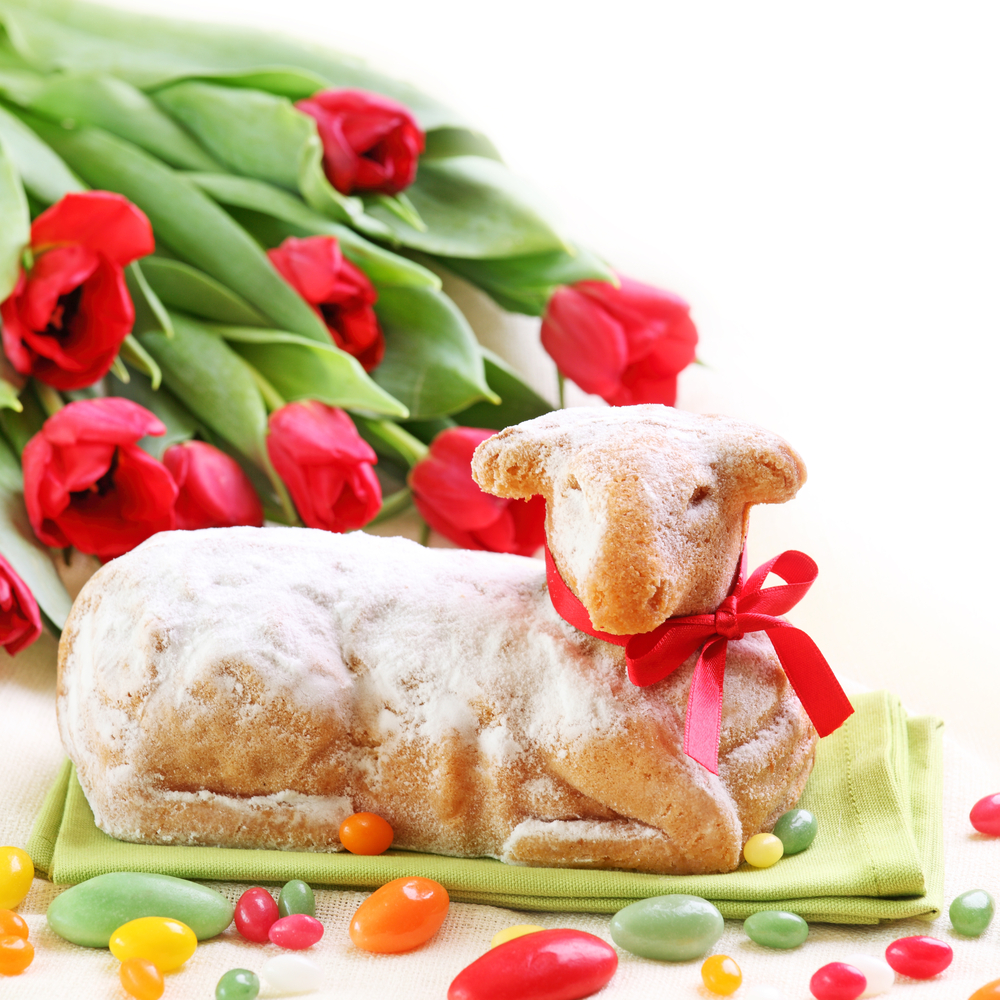
8. Śledź
This Polish Easter food is not only loved by the Polish but it reaches inside the homes of the Dutch and Danish. Śledź is a fish dish recipe that involves perfectly sliced fillets of herring covered in some vinegar and oil.
The dish is so special that some Polish households prepare their herrings by dipping them in vinegar and oil months in advance. This allows the flavors to seep into the fish to enhance the taste. In some parts of the world, the fish is also dipped with other vegetables such as onions.

9. Makowiec
Ever seen a swiss jam roll? Well, the Makowiec is a Polish Easter food that looks just like that, minus the cream. The recipe uses poppy seeds to make a special dough just like the babka, which is then baked into different shapes and sizes.
In terms of the taste, the poppy seed roll is more on the crunchy side rather than soft. Also, it has a nutty taste because of the seeds. Before serving it is usually covered in icing to enhance the sweetness.
In Poland, people make small tweaks such as using sugar on the dough instead of icing and adding dried fruits to the mix. The addition of dried fruits goes hand in hand with the nutty flavor, giving you a burst of flavors.
10. Chrzan
If you’re planning a Polish Easter party then you already know what we’re talking about. Chrzan or Horseradish is a vegetable commonly used in Poland for most dishes. The horseradish is grated and converted to a sauce which goes great with meat slices such as cold cuts or baked ham.
One variation of the Chrzan you will always see on the Polish Easter table is the Horseradish beetroot relish. This is loved by almost everyone, whether you’re Polish or not.
Be careful when you’re chopping up those radishes because some of them might even make your eyes water.
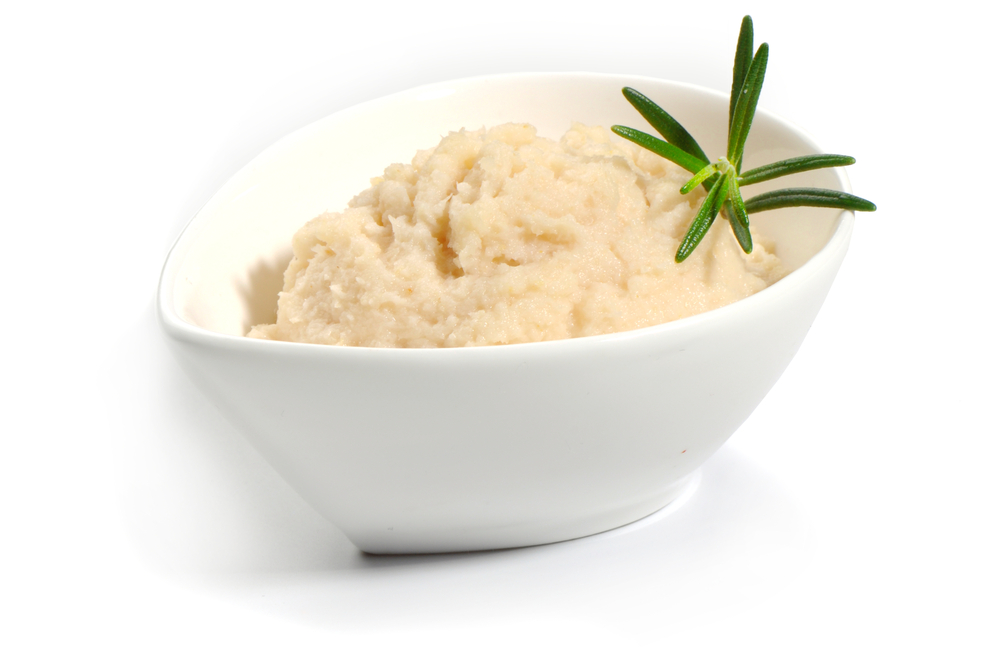
Horseradish sauce 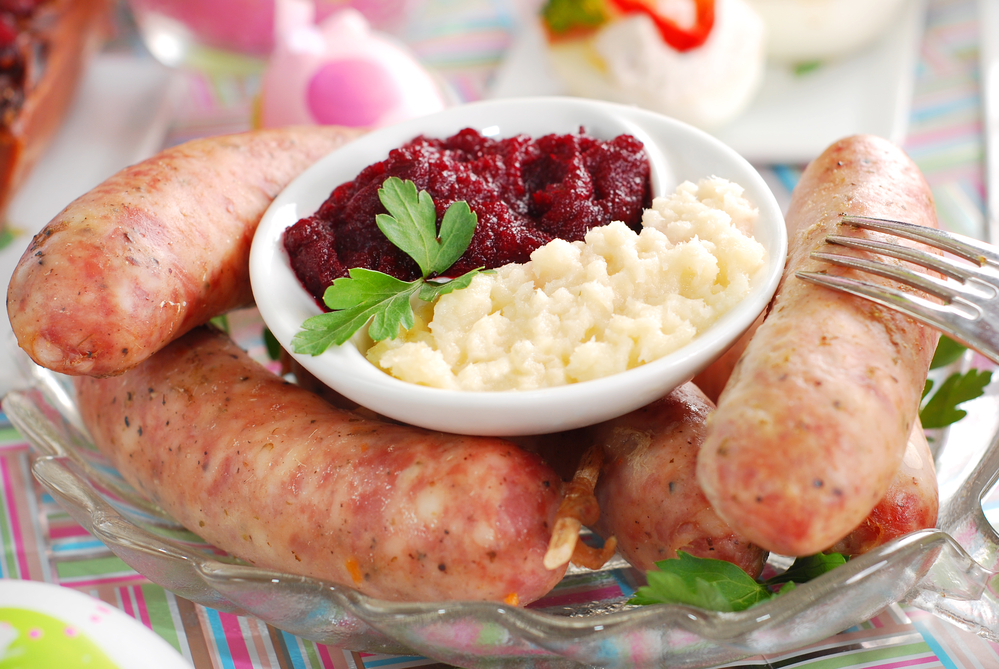
Traditional Polish white sausage with beetroot and horseradish sauce on Easter table
11. Pasztet z Kurczaka
Known as Chicken Pate in English, this dish looks and smells absolutely delicious. Making this isn’t as simple as it may seem, however, if you get the right recipe, you might just have the perfect Pasztet z Kurczaka this Easter.
This Polish Easter dish contains chicken cooked with selected herbs and spices. What makes this so different is the minced chicken texture. In Poland, people are seen to spread a thin layer of this dish on toasted bread, dark bread or even some crackers.
12. Sernik
This is a dessert that dates way back to the culinary traditions of the ancient Greek civilization. The Sernik is like a thick and creamy cheesecake found only in Poland. This is quite different from your average cheesecakes as it uses a special kind of cheese called twaróg. This is exclusively made in Poland and very difficult to find elsewhere.
The rich texture of the twaróg forms the base of the flavors you find in a Sernik once it is baked. If you choose to prepare this for your Polish Easter table, we would highly suggest you make the effort to look for Polish twaróg. Your average cottage or country cheese just won’t cut the deal.
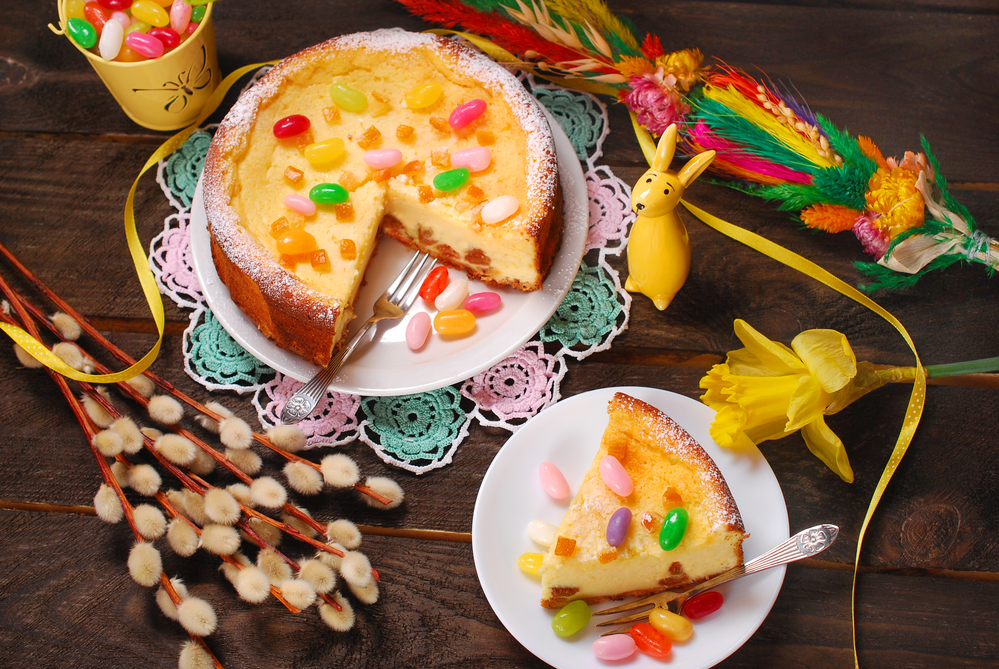
13. Haluski
The Haluski is an old-school Polish noodle that tastes absolutely amazing. The secret to making this Easter dish taste so good is the way you cook it.
In Poland, the raw noodles are sautéed with butter, garlic, onions, and tons of shredded cabbage. Once done they add some sour cream to mix the contents. If you want, you can also add in a few eggs to create a wider array of flavors. This is usually served with butter and some dark bread.
If you’re feeling good about the taste of your noodles, try adding some white sausage to the mix. The meat flavor from the sausage should go perfectly with the sour cream and noodles.
14. Mazurek
Last, but certainly not least – the original Mazurek. It instantly comes to mind when we think of traditional Polish Easter cake. Being such a popular Polish dish, it comes in plenty of different iterations – all of them equally delicious and distinctive in their way.
The Mazurek cake typically consists of three basic layers – a crunchy pastry base, a filling and a heavily decorated top. The base is usually the same, but where Mazurek cakes differ is the filling and the top.
The most popular choices for Mazurek fillings include jams, creams, chocolate, meringue, marzipan, creams and so on. It’s a very versatile cake, so it may be a good idea to learn how to bake it not only for Easer – as an idea for a delicious dessert, it will prove its worth on many different occasions.
When it comes to toppings, the sky is the limit – but when we’re talking about the Easter iteration, the most frequent choices include cherries, sliced almost, confectioner’s sugar, preserves, almond paste and – most notably – dried fruits and nuts.
The name itself – Mazurek – refers to traditional Polish folk dance, as well as the region Mazovia.
Final Words
Easter is a holiday celebrated by all Christians no matter the country or race. All the Polish Easter recipes above are well-known favorites. So call your buddies from the local churches over for a special holiday celebration with Polish cuisine.
Wishing you a Happy Easter!



